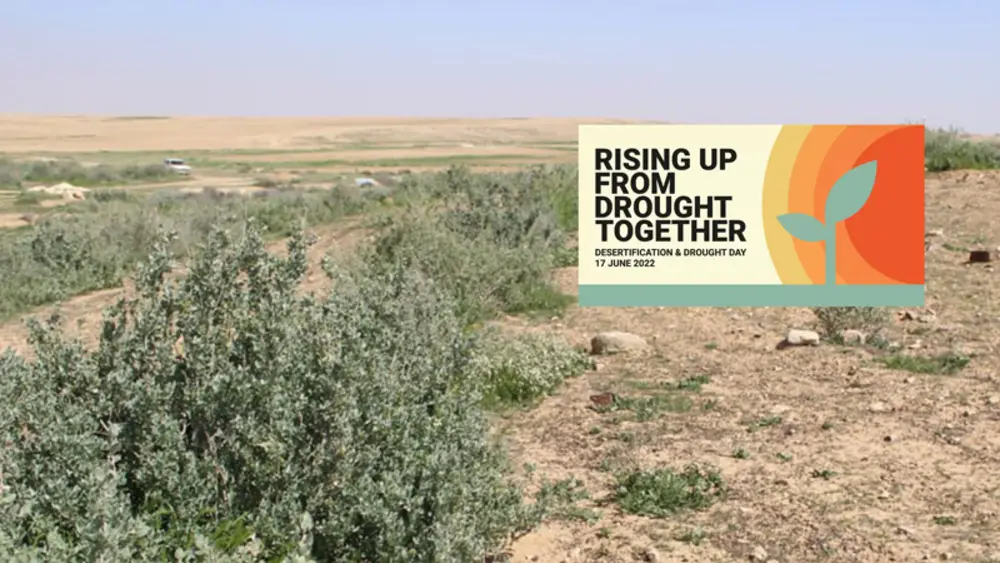
Natural vegetation, pollinators, birds – a whole ecological system that was recently a barren wasteland has been brought back to life through ICARDA’s work in the Middle Badia of Jordan on adequate and sustainable land management approaches.
The hilly terrain of the Badia of Jordan, which spans 80% of the country’s total surface area, was not always so barren and desiccated. Until the 1960s, the Badia – home to 400,000 Bedouins and 85 percent of the country’s livestock – was a healthy ecosystem providing an abundance of nutritious and rainfed forage for animals, sustaining the Bedouins’ livelihoods.
But a confluence of factors, some man-made, others climate-related, have driven a progressive, yet inevitable, ecological collapse. Worsening droughts, patchy rainfall, violent flash floods, unsustainable land management, and livestock rearing practices have all played a part in this gradual land degradation, exacerbated by ill-advised irrigation schemes and resettlement projects.
The general loss of vegetation has turned once healthy soil into a hard, impermeable crust. Runoff rates have intensified, causing sedimentation of downstream water reservoirs, further limiting farmers’ access to clean irrigation water.
————————————-
This research was supported by the U.S. Department of Agriculture Forest Service, and the CGIAR Research Program on Water, Land, and Ecosystems (WLE). The authors would like to thank the members of the Al-Majidyya Men Association for enabling, supporting, and securing research on their land.
